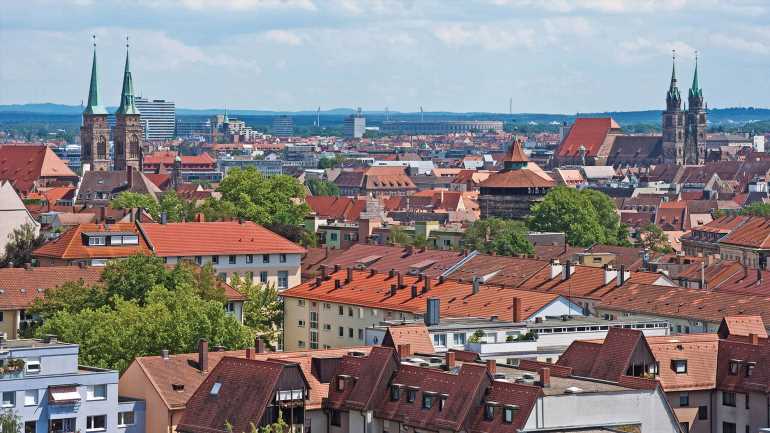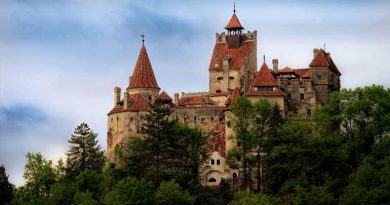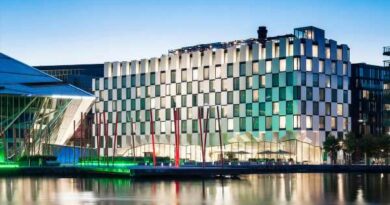Digging into Nuremberg history and culture
“What do you know about our city?” our young tour guide asked as we prepared to board a bus for a daylong tour of Nuremberg, Germany.
“Well, just the trials,” I said, referring to the famous Nuremberg tribunals following World War II, where Nazi leaders were convicted of war crimes.
“Yes, of course,” he replied sadly, as if he’d been hoping for a different answer.
In fact, Nuremberg is a city with a past, and you don’t have to dig far to learn about it. World War II tours are widely available that delve into this dark chapter of history, and tour guides are knowledgeable and honest about the era.
But I quickly learned that Nuremberg is also loaded with enough culture, art and cuisine to cast a wide net when it comes to attracting visitors, and over the course of a few days, I tried to see them all.
Looking back
WWII buffs can be a witness to history by visiting the Nuremberg Trials Memorial at Nuremberg’s Palace of Justice in the building where in 1946 some of the most notorious Nazi ringleaders were convicted of crimes against humanity by an international tribunal.
The museum, located above Courtroom 600 where the trials took place, offers a virtual experience of the proceedings with video recordings from the trials that captivated the world at the time and set new precedents for international law and subsequent war crimes trials.
Moving further back in time, visitors can take in an exhibit in the Documentation Centre at the Nazi Party Rally Grounds, where Hitler held his rallies in the 1930s. Think Rome’s Colosseum and you get the idea of its size and shape, so set aside some time for exploration. Even without guides, there is signage in place to help explain what you are looking at and what it was used for.
Another stop on our tour was the Way of Human Rights at the Germanic National Museum. Created by architect/artist Dani Karavan and inaugurated in 1993, the open-air installation comprises a series of white columns symbolizing the city’s commitment to justice and humanity and a warning to not forget crimes against humanity that continue to occur around the world.
Travel Weekly is tracking the Covid-related travel requirements for countries in Europe.
Of course, Nuremberg’s history goes much further back than the war, and the next day we embarked on a journey into the Middle Ages.
You don’t have to be a student of architecture to appreciate the wealth of medieval churches, half-timbered houses and historical monuments in the city’s Old Town. It’s interesting to note that these medieval structures are reconstructions, albeit extremely faithfully executed, of the originals, many of which were bombed in 1945 by the Allies in the war.
Presiding over Old Town is the Imperial Castle of Nuremberg, which was built in the mid-12th century, although the site’s origins go back several centuries before that. In addition to its sweeping grandeur, the castle offers extensive gardens and a restaurant. The castle was damaged in 1945, but some Gothic sections survived, and the reconstruction began almost immediately after the war.
Another popular attraction in the city is the Toy Museum, with hands-on sections for children and exhibits that range from historical — representing the city’s reputation for toymakers that goes back 600 years — to modern-day toys and dolls.
Art lovers can view the works of one of the best-known German Renaissance artists at the Albrecht Durer’s House. Most famous for his self-portraits and his painting “Young Hare,” Durer was also a printmaker, and his house, where he worked in the 1500s, is original and astonishingly well preserved.
Museum staff are on hand to demonstrate the techniques Durer used back in the day to create his art and influence techniques for future artists.
Looking forward
On tap for next year is the Blue Night festival, an annual spring event inaugurated in 2000 to mark Nuremberg’s 950th anniversary. Created by local cultural institutions, the festival was canceled last year because of the pandemic, but the next one is slated for May 7.
The one-night event, which has drawn some 140,000 visitors in years past, takes place in venues throughout Old Town and features art installations, sound and light shows, interactive presentations and dance performances, bathed in colorful light.
New on the museum scene is the Deutsches Museum, a branch of the Deutsches Museum in Munich. Exhibits focus on the future — how to imagine it and how to shape it with technology and the natural sciences.
Finally, the city is opening several new hotels this year.
Hotel Karl August, part of the new Augustinerhof area next to the main market square, is a 120-room property featuring an indoor pool, a gym, a restaurant and interconnecting rooms as well as long-stay suites with kitchens and dining tables.
The Leonardo Royal at the main railway station offers a centralized location for exploring Old Town. The pet-friendly property features 102 rooms, a bar and breakfast buffet, a rooftop terrace and free WiFi.
Motel One, also next to the main railway station, features a hotel bar on the 14th floor with a scenic view over Nuremberg.
The budget-friendly property is also pet-friendly and offers a breakfast buffet in a room surrounded by vintage railway-inspired images, free WiFi and a lounge serving drinks and snacks. There also are communal working spaces, and kids 12 and younger stay free in their parents’ room.
Visitors to Nuremberg should be prepared to follow Covid-19 protocols, which can include wearing medical-grade masks on transportation and in enclosed public space.
Update: The Nuremberg Christmas market was officially canceled Nov. 19 due to new rules and regulations passed by the German state of Bavaria.
Source: Read Full Article


![T0621EUROPEMAP_SS_HR [Credit: Janis Abolins/Shutterstock.com] T0621EUROPEMAP_SS_HR [Credit: Janis Abolins/Shutterstock.com]](https://ik.imgkit.net/3vlqs5axxjf/TW/ik-seo/uploadedImages/All_TW_Art/Shutterstock_Art/2021/T0621EUROPEMAP_SS_HR/T0621EUROPEMAP_SS_HR-Credit-Janis-Abolins-Shutters.jpg)


